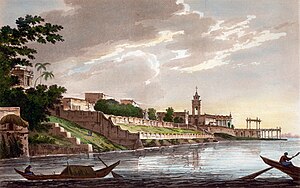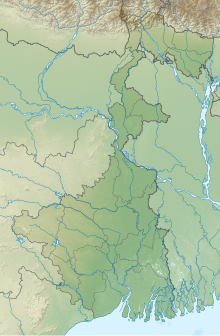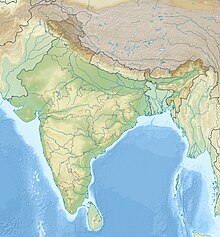This article relies largely or entirely on a single source. (April 2020) |
| Battle of Chinsurah | |||||||
|---|---|---|---|---|---|---|---|
| Part of the Seven Years' War | |||||||
 A 1787 painting of Chinsurah by William Hodges | |||||||
| |||||||
| Belligerents | |||||||
|
|
| ||||||
| Commanders and leaders | |||||||
|
|
| ||||||
| Strength | |||||||
|
300 European infantrymen 800 sepoys 50 European cavalrymen 200 Indian cavalrymen 3 warships 100 Bengali cavalrymen |
150 Europeans (garrison) 300 sepoys (garrison) 700 Europeans (reinforcements) 800 Malays (reinforcements) 7 warships | ||||||
| Casualties and losses | |||||||
| Unknown |
320 killed 300 wounded 550 captured 6 warships captured 1 warship grounded | ||||||
Location within West Bengal | |||||||
The Battle of Chinsurah, also known as the Battle of Biderra or the Battle of Hoogly, was a military engagement which took place on 25 November 1759 near Chinsurah (then a Dutch outpost) during the Seven Years' War. It took place between a force of British troops mainly of the British East India Company and a force of the Dutch East India Company which had been invited by the Nawab of Bengal Mir Jafar to help him expel the British and establish themselves as the leading commercial company in Bengal.
Despite the Kingdom of Great Britain and the Dutch Republic not formally being at war, the Dutch advanced up the Hooghly River. They met a mixed force of British and Indian troops at Chinsurah, fifty kilometres outside Calcutta. The British, under Colonel Francis Forde, defeated the Dutch, forcing them to withdraw. The British engaged and defeated the ships the Dutch used to deliver the troops in a separate naval battle on 24 November.[1]
- ^ Spectrum Modern History Of India, Rajiv Ahir, page 41.

